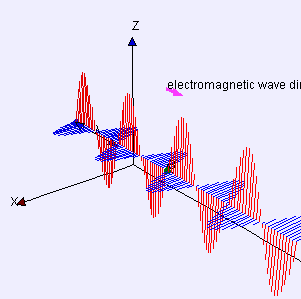Introduction to Electromagnetic Waves
Electromagnetic waves are so important to the ocean, and planet, that we will briefly touch on several aspects without first developing the detailed physical basis for why these waves exist. To better understand this phenomenon, you are encouraged to take a full course on electromagnetism.

We will start with the fact that electromagnetic waves are created whenever a charged particle moves. These waves need no medium for propagation, but are a self-sustaining oscillation of the coupled electric and magnetic fields. At the quantum level, the continuous field view breaks down, and we understand that the wave is a probability distribution for light particles called photons.
Light is perhaps the most readily apparent form of electromagnetic energy, forming the basis for most of our planet’s ecosystems. In the upper ocean, the light field is an essential control on phytoplankton growth, and we will explore absorption in this context. Absorption of electromagnetic energy, and the counterpart process of emission (over a broader range of wavelengths) also govern the climate of the planet, our final topic of study in this course.
Media Attributions
- Electromagneticwave3D © Wikimedia: Lookang many thanks to Fu-Kwun Hwang and author of Easy Java Simulation = Francisco Esquembre

